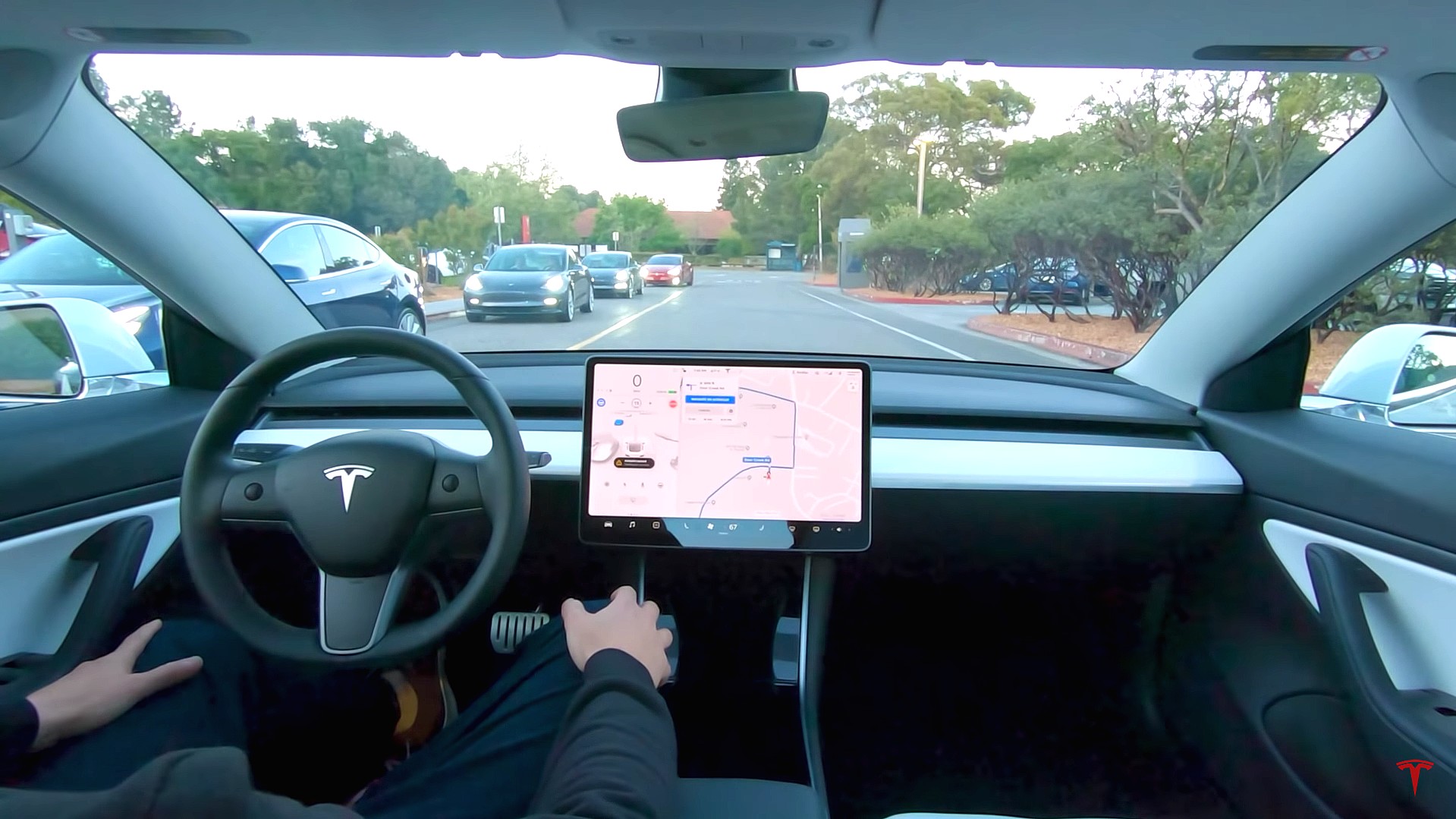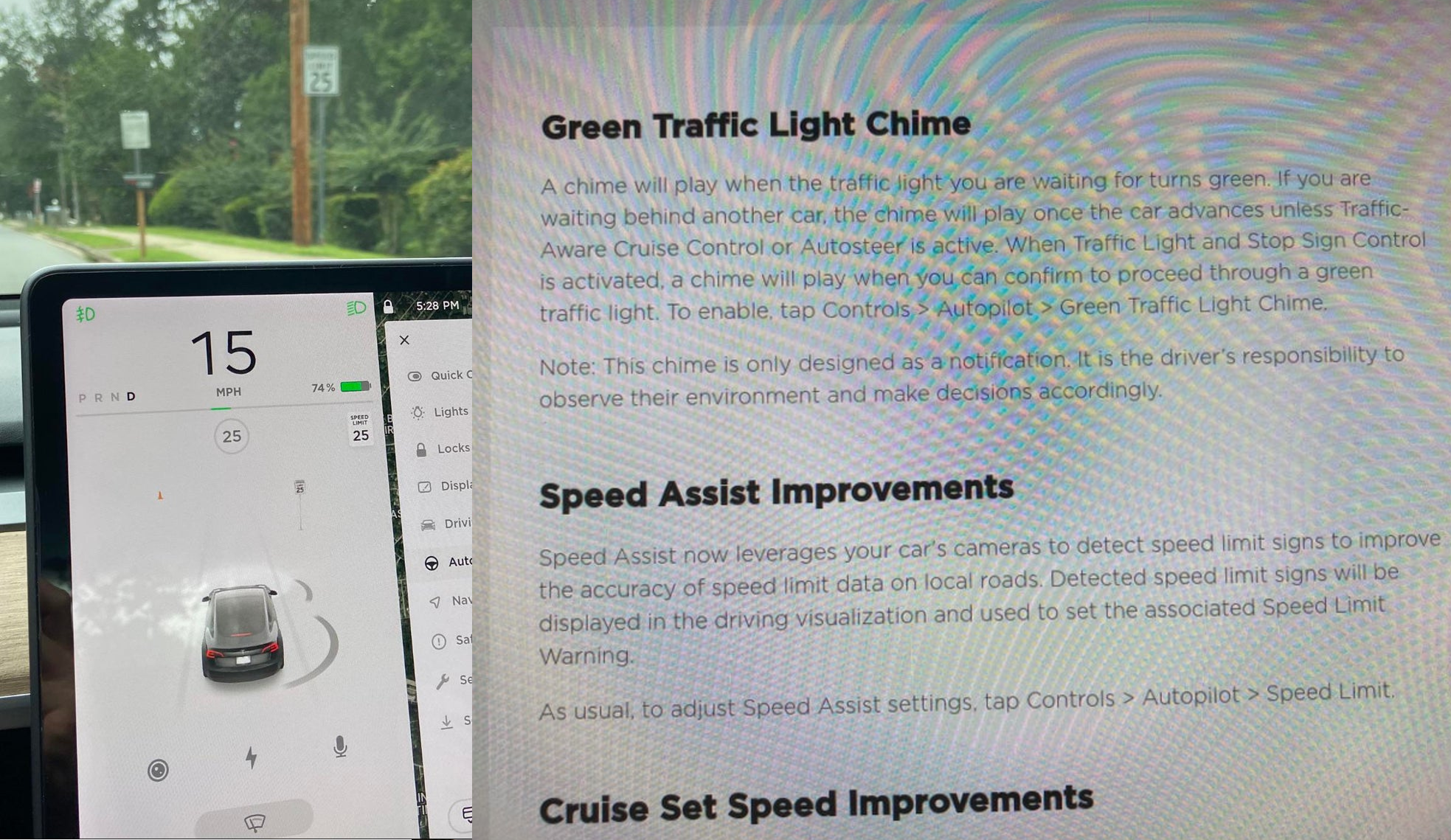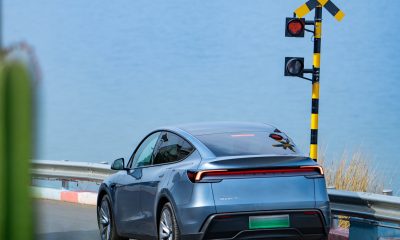

Firmware
Tesla’s HW3 upgrade next year will usher in Full Self-Driving, improved Neural Net computing abilities
Tesla’s recently held Q3 2018 earnings call provided several updates on the company’s ongoing Hardware 3 development, which would help its fleet of electric cars achieve Full Self-Driving capabilities in the future. According to the company’s executives, work on the custom hardware is continuing, and prototypes of HW3 have already been installed on test units of the Model S, X, and 3.
The updates on Tesla’s Full Self-Driving plans and the development of the third version of Autopilot hardware were announced during the opening minutes of the earnings call. Pete Bannon, who heads the team developing the Tesla’s custom AI chip, noted that the company would be building a manufacturing line for HW3, emphasizing the vertical integration strategy that has become a trademark of the electric car maker.
Bannon also stated that development on the third-generation hardware saw notable progress in the quarter. The qualification of the chip and board, for one, as well as the qualification of its manufacturing lines, were conducted in Q3. Test versions of Model S, Model X, and Model 3 vehicles equipped with Hardware 3 have also been completed to validate the homegrown hardware.
Ultimately, Tesla’s progress on its Autopilot suite comes amidst the company’s focus in the development and eventual rollout of its Full Self-Driving suite, which is expected to happen in the second quarter of 2019. During the earnings call, Elon Musk noted that HW3 should provide Tesla’s electric cars with a 1000% improvement in processing capability compared to current hardware. Musk also reiterated that the cost of HW3 would be identical to HW2, despite a tenfold improvement in performance.
“[It’s] very important to emphasize that the only thing that needs to change between a car that’s produced today and a car that’s going to be produced in the second quarter of next year is probably the autopilot computer. This is a simply change that takes about half an hour to upgrade the computer. Anyone will be able to upgrade their car to Full Self-Driving capability with a simple service visit. Basically anything made in the last two years will be upgradable to Full Self-Driving. So its better important to emphasize that there’s no need to wait until that comes out because its just a very simple plug and play change to get to Full Self-Driving. Anyone who has made for Full Self-Driving option will get it done for free. It really ends up being a discount on future capability.”
Tesla Director of Artificial Intelligence Andrej Karpathy also provided some details on the improvements of the company’s neural networks, which have been growing steadily as the size of the fleet increases. The AI director noted that the upcoming hardware would be pivotal in supporting the growing demands of Tesla’s ever-growing neural net.
“The team is incredibly excited about the upcoming upgrade for the Autopilot computer. This upgrade allows us to not just run the current neural networks faster, but more importantly, it would allow us to deploy much larger computational and more expansive networks to the fleet. The reason this is important is that it is a common finding in the industry that as you make the networks bigger, the accuracy of their prediction increases with the added capacity. Now we’re currently at a place where we’ve trained large networks that work very well, but are not able to deploy them to the fleet due to computational constraints. So all of these will change with the next iteration of the hardware, and it’s a massive step improvement in computing capability, and the team is incredibly excited to get these networks out there.”

As Tesla prepares for the rollout of Hardware 3, the company is the also setting the stage of the release of its most advanced iteration of Autopilot to date. During the official release of V9, Tesla opted to hold back Navigate on Autopilot, a feature that allows vehicles to automatically change lanes, handle forks in the road, and conduct on-ramp and off-ramp maneuvers. Stewart Bowers, Tesla’ VP for Engineering, described the upcoming feature in the Q3 earnings call.
“We will soon roll out the team’s most advanced autopilot ever, Navigate on Autopilot. In our last release we watched a new set of neural networks that combined together provide a view of everything happening in and out of the car. With Navigate on Autopilot, we’ll use information to understand exactly where the car is on the highway system and to automatically change lanes, handle forks, and take high-curvature exits to follow a map route. Initially it will require drivers to confirm lane changes using the turn signal before the car moves into an adjacent lane. Future versions will allow customers to waive the confirmation requirements if they choose to.
“One area that I’m personally really excited to build on in this improvement is active safety. With the advancement of neural network covering 360 views around our car we can provide a level of constant vigilance that humans just can’t. Ultimately, this will allow us to warn and even intervene for an enormous percentage of modern accidents and to ship these improvements as software upgrades to our existing customers. By bringing out more cameras around the car, we can detect things as they come toward us not just directly in front of us.”
Initial demos of Navigate on Autopilot from members of Tesla’s early access program have teased some of the capabilities of Navigate on Autopilot, which includes Elon Musk’s fondly-named “Mad Max” setting, which determines the aggressiveness of the electric car when changing lanes and maneuvering around traffic. As could be seen in videos of the feature, though, even Tesla’s Mad Max setting is incredibly careful on the road, initiating overtaking maneuvers only when it is safe.
Firmware
Tesla mobile app shows signs of upcoming FSD subscriptions

It appears that Tesla may be preparing to roll out some subscription-based services soon. Based on the observations of a Wales-based Model 3 owner who performed some reverse-engineering on the Tesla mobile app, it seems that the electric car maker has added a new “Subscribe” option beside the “Buy” option within the “Upgrades” tab, at least behind the scenes.
A screenshot of the new option was posted in the r/TeslaMotors subreddit, and while the Tesla owner in question, u/Callump01, admitted that the screenshot looks like something that could be easily fabricated, he did submit proof of his reverse-engineering to the community’s moderators. The moderators of the r/TeslaMotors subreddit confirmed the legitimacy of the Model 3 owner’s work, further suggesting that subscription options may indeed be coming to Tesla owners soon.
Did some reverse engineering on the app and Tesla looks to be preparing for subscriptions? from r/teslamotors
Tesla’s Full Self-Driving suite has been heavily speculated to be offered as a subscription option, similar to the company’s Premium Connectivity feature. And back in April, noted Tesla hacker @greentheonly stated that the company’s vehicles already had the source codes for a pay-as-you-go subscription model. The Tesla hacker suggested then that Tesla would likely release such a feature by the end of the year — something that Elon Musk also suggested in the first-quarter earnings call. “I think we will offer Full Self-Driving as a subscription service, but it will be probably towards the end of this year,” Musk stated.
While the signs for an upcoming FSD subscription option seem to be getting more and more prominent as the year approaches its final quarter, the details for such a feature are still quite slim. Pricing for FSD subscriptions, for example, have not been teased by Elon Musk yet, though he has stated on Twitter that purchasing the suite upfront would be more worth it in the long term. References to the feature in the vehicles’ source code, and now in the Tesla mobile app, also listed no references to pricing.
The idea of FSD subscriptions could prove quite popular among electric car owners, especially since it would allow budget-conscious customers to make the most out of the company’s driver-assist and self-driving systems without committing to the features’ full price. The current price of the Full Self-Driving suite is no joke, after all, being listed at $8,000 on top of a vehicle’s cost. By offering subscriptions to features like Navigate on Autopilot with automatic lane changes, owners could gain access to advanced functions only as they are needed.
Elon Musk, for his part, has explained that ultimately, he still believes that purchasing the Full Self-Driving suite outright provides the most value to customers, as it is an investment that would pay off in the future. “I should say, it will still make sense to buy FSD as an option as in our view, buying FSD is an investment in the future. And we are confident that it is an investment that will pay off to the consumer – to the benefit of the consumer.” Musk said.
Firmware
Tesla rolls out speed limit sign recognition and green traffic light alert in new update

Tesla has started rolling out update 2020.36 this weekend, introducing a couple of notable new features for its vehicles. While there are only a few handful of vehicles that have reportedly received the update so far, 2020.36 makes it evident that the electric car maker has made some strides in its efforts to refine its driver-assist systems for inner-city driving.
Tesla is currently hard at work developing key features for its Full Self-Driving suite, which should allow vehicles to navigate through inner-city streets without driver input. Tesla’s FSD suite is still a work in progress, though the company has released the initial iterations of key features such Traffic Light and Stop Sign Control, which was introduced last April. Similar to the first release of Navigate on Autopilot, however, the capabilities of Traffic Light and Stop Sign Control were pretty basic during their initial rollout.
2020.36 Showing Speed Limit Signs in Visualization from r/teslamotors
With the release of update 2020.36, Tesla has rolled out some improvements that should allow its vehicles to handle traffic lights better. What’s more, the update also includes a particularly useful feature that enables better recognition of speed limit signs, which should make Autopilot’s speed adjustments better during use. Following are the Release Notes for these two new features.
Green Traffic Light Chime
“A chime will play when the traffic light you are waiting for turns green. If you are waiting behind another car, the chime will play once the car advances unless Traffic-Aware Cruise Control or Autosteer is active. When Traffic Light and Stop Sign Control is activated, a chime will play when you can confirm to proceed through a green traffic light. To enable, tap Controls > Autopilot > Green Traffic Light Chime.
“Note: This chime is only designed as a notification. It is the driver’s responsibility to observe their environment and make decisions accordingly.”
Speed Assist Improvements
“Speed Assist now leverages your car’s cameras to detect speed limit signs to improve the accuracy of speed limit data on local roads. Detected speed limit signs will be displayed in the driving visualization and used to set the associated Speed Limit Warning.
“As usual, to adjust Speed Assist settings, tap Controls > Autopilot > Speed Limit.”
Footage of the new green light chime in action via @NASA8500 on Twitter ✈️ from r/teslamotors
Amidst the rollout of 2020.36’s new features, speculations were abounding among Tesla community members that this update may include the first pieces of the company’s highly-anticipated Autopilot rewrite. Inasmuch as the idea is exciting, however, Tesla CEO Elon Musk has stated that this was not the case. While responding to a Tesla owner who asked if the Autopilot rewrite is in “shadow mode” in 2020.36, Musk responded “Not yet.”
Firmware
Tesla rolls out Sirius XM free three-month subscription

Tesla has rolled out a free three-month trial subscription to Sirius XM, in what appears to be the company’s latest push into making its vehicles’ entertainment systems more feature-rich. The new Sirius XM offer will likely be appreciated by owners of the company’s vehicles, especially considering that the service is among the most popular satellite radios in the country today.
Tesla announced its new offer in an email sent on Monday. An image that accompanied the communication also teased Tesla’s updated and optimized Sirius XM UI for its vehicles. Following is the email’s text.
“Beginning now, enjoy a free, All Access three-month trial subscription to Sirius XM, plus a completely new look and improved functionality. Our latest over-the-air software update includes significant improvements to overall Sirius XM navigation, organization, and search features, including access to more than 150 satellite channels.
“To access simply tap the Sirius XM app from the ‘Music’ section of your in-car center touchscreen—or enjoy your subscription online, on your phone, or at home on connected devices. If you can’t hear SiriusXM channels in your car, select the Sirius XM ‘Subscription’ tab for instruction on how to refresh your audio.”
Tesla has actually been working on Sirius XM improvements for some time now. Back in June, for example, Tesla rolled out its 2020.24.6.4 update, and it included some optimizations to its Model S and Model X’s Sirius XM interface. As noted by noted Tesla owner and hacker @greentheonly, the source code of this update revealed that the Sirius XM optimizations were also intended to be released to other areas such as Canada.
Interestingly enough, Sirius XM is a popular feature that has been exclusive to the Model S and X. Tesla’s most popular vehicle to date, the Model 3, is yet to receive the feature. One could only hope that Sirius XM integration to the Model 3 may eventually be included in the future. Such an update would most definitely be appreciated by the EV community, especially since some Model 3 owners have resorted to using their smartphones or third-party solutions to gain access to the satellite radio service.
The fact that Tesla seems to be pushing Sirius XM rather assertively to its customers seems to suggest that the company may be poised to roll out more entertainment-based apps in the coming months. Apps such as Sirius XM, Spotify, Netflix, and YouTube, may seem quite minor when compared to key functions like Autopilot, after all, but they do help round out the ownership experience of Tesla owners. In a way, Sirius XM does make sense for Tesla’s next-generation of vehicles, especially the Cybertruck and the Semi, both of which would likely be driven in areas that lack LTE connectivity.
-

 Elon Musk1 day ago
Elon Musk1 day agoTesla investors will be shocked by Jim Cramer’s latest assessment
-

 News6 days ago
News6 days agoTesla Robotaxi’s biggest challenge seems to be this one thing
-

 News2 weeks ago
News2 weeks agoTesla’s Grok integration will be more realistic with this cool feature
-

 Elon Musk2 weeks ago
Elon Musk2 weeks agoElon Musk slams Bloomberg’s shocking xAI cash burn claims
-

 News2 weeks ago
News2 weeks agoTesla China roars back with highest vehicle registrations this Q2 so far
-

 News2 weeks ago
News2 weeks agoTexas lawmakers urge Tesla to delay Austin robotaxi launch to September
-

 News2 weeks ago
News2 weeks agoTesla dominates Cars.com’s Made in America Index with clean sweep
-

 Elon Musk1 week ago
Elon Musk1 week agoFirst Look at Tesla’s Robotaxi App: features, design, and more















